Engine -
Ultra-lightweight, compact, 998 cc, DOHC, 16-valve (4-valves / cyl.), liquid-cooled, in-line four-cylinder engine with crossplane-style crankshaft.
-
Redesigned in 2020: cylinder head, fuel injectors, finger-follower rocker arms and camshaft profiles
- The key components of this cutting edge engine design are the "crossplane" crankshaft and an uneven firing order. Both of these features are used on Yamaha's race-winning M1 MotoGP racer. The R1M crossplane crankshaft locates the centre two rods at a 90-degree plane from the outer cylinders. Instead of the crank pins aligned on the same plane (a straight line drawn through the center of the crankshaft), they align on 2 planes in the form of a cross, or "crossplane". Working in conjunction with the crossplane crank is an uneven firing order. This R1M engine fires 1,3,2,4 cylinders and the firing intervals are uneven at 270 / 180/ 90 /180 degrees. What all this means to the rider is the most linear torque possible and amazing throttle control. This engine design allows a whole new level of rider/machine communication. One of the most important benefits is the outstanding cornering performance that increased engine / throttle control allows.
- The key engineering goal for the R1 series is significant horsepower with excellent controllability, making the bike easier and more enjoyable to ride. The R1M is a rider's machine.
-
4-valve cylinder head design
- compact pent-roof combustion chambers with 13:1 compression ratio
- lightweight 33 mm intake titanium valves and 26.5 mm steel exhaust valves
- 4-valve design optimizes breathing efficiency and overall engine performance
- combustion chambers are machined to ensure exact volume spec for maximum power
-
Special intake port shape provides maximum filling efficiency.
- port shape, valve placement and combustion chamber shape induce a tumbling effect of the inbound fuel - air charge that increases combustion speed, power and torque
-
Finger-follower rocker arms.
- reduces friction, allows greater valve lift and provides super accurate control of valve opening and closing at high rpms
- sliding area of the rocker arms feature a DLC (diamond like coating) to reduce friction and wear
- valve adjustment pads sit under the rocker arm
-
Valve adjustment intervals are every 42,000 km.
-
High-performance intake and exhaust cams
-
deck aluminum cylinder with linerless ceramic composite-plated cylinder bores.
- ceramic coating sprayed directly on the aluminum block, eliminating the liner and reducing weight
- excellent heat dissipation for consistent power delivery
- coating enhances the thin film of oil between the cylinder and piston, reducing friction and increasing power
- deck design allows cylinders to be spaced more closely together, reducing engine width
- cylinder is a standalone design (not integrated into the upper crank case)
-
Offset cylinder design
- offset cylinder block relative to the crankshaft (to the exhaust side) reduces frictional losses between the piston and cylinder wall during the power stroke for improved power output
-
Short skirt, forged aluminum pistons.
- lightweight design for fast throttle response
- piston features a box-shaped "bridge box" on the underside for increased rigidity and durability
- special Defric coating on skirt to further reduce friction
- ring expansion tension is optimized to reduce frictional losses
- piston oil coolers spray oil at the underside of piston to reduce temperature
-
Crossplane crankshaft design.
- crank inertial moment has been engineered to achieve linear throttle response, strong acceleration and excellent cornering exit control
-
Super light, fracture split titanium connecting rods feature a "nutless" design.
- lower end "cap" of the rod is made from the same piece of material as the upper portion; the 2 pieces are "split" apart using a special process known as fracture splitting and then machined
- lightweight titanium design (60% lighter than a conventional steel con rod) reduces horsepower losses and provides faster throttle response
- fracture split "Ti" rods are a world's first to be used on a production motorcycle
-
Single axis balancer shaft
- reduces engine vibration
-
Crankcases feature a "Tri-Axis" layout for the crank, main and drive axles.
- creates a more compact and shorter engine (front to back)
- shorter engine allows for optimum engine placement in the "sweet spot" of frame for desired weight distribution and great handling
-
Closed-loop, 45 mm Mikuni throttle body fuel injection system with twin injectors.
- twin injector (primary and secondary) system is used on our MotoGP M1 race bike, R1 and YZF-R6
- primary injectors are located in the throttle bodies, secondary injectors located in the airbox, very near the computer-controlled intake funnels
- both primary and secondary injectors utilize 10 spray holes to maximize fuel atomization
- secondary injectors, located inside the air box, begin to function at mid-rpm to redline
- " loop system" uses dual oxygen sensors to sniff spent exhaust gases and automatically adjusts the fuel / air ratio for reduced emissions
- fuel injection benefits include instant throttle response, choke-free starting, steady idle during warm up and reduced emissions
-
Yamaha Chip Control Throttle (YCC-T)
- YCC-T electronically controls throttle valves for outstanding throttle response and controllability
- system features Throttle Position Sensor (TPS) and D.C. motor driven throttle valves
- YCC-T system provides precise control of intake air volume for a smoother torque curve
- ECU that controls YCC-T is capable of responding to changes at a speed of 1/1000th of a second
-
Yamaha Chip Controlled Intake (YCC-I) system
- intake funnels / stacks vary in length between two preset positions depending on engine rpm
- electronic servo motor varies the funnels. The revolutionary YCC-I provides the best of both worlds - solid low-rpm torque and power combined with an amazing high-rpm rush. It takes only 0.3 seconds for the funnels to move from the tall to the short position
-
Accelerator Position Sensor with Grip (APSG).
- eliminates the need for throttle cables and reduces weight while providing smoother throttle operation
-
Compact six-speed transmission.
- features optimized gear ratios matched to engine output for maximum performance
-
Compact, lightweight slipper or back limiter clutch assembly with assist.
- reduces rear wheel hop when making down shifts under hard braking
- key benefit is reduced lap times and smoother control when participating in a race or track day
- assist function reduces clutch lever effort
-
Ram Air Induction System
- features a centrally-located intake duct between the LED headlights, delivering cool, force-fed air which pressures the airbox and increases power output at higher speeds
- straight shot induction from centrally located fairing duct to air box without bends or turns
-
Large capacity 10.5-litre air box
- large capacity maximizes performance
- M1-inspired intake duct with solenoid valve reduces intake noise and improves high-rpm power
- viscous type, high-flow air filter is used
-
Mid-ship design 4-into-2-into-1 exhaust system
- features lightweight titanium header pipes and muffler for reduced weight
- design maximizes power, reduces weight, centralizes mass and lowers the centre of gravity for fast, light, agile handling
- dual 3-way honeycomb catalyzers which reduce harmful exhaust emissions.
-
Special exhaust valve device
- located in under-engine chamber and features two separate exhaust flow routes based on rpm
- system allows a more compact muffler design that provides outstanding power output and torque characteristics while still providing sufficient silencing
-
Yamaha's EXUP System (Exhaust Ultimate Power Valve).
- part of the mid-ship exhaust system
- utilizes a titanium body and butterfly valves that prevent the "blow-back" phenomenon caused by "valve overlap"
- design reduces weight and maximizes cornering clearance
- EXUP system eliminates "flat spots" in the powerband and reduces emissions too
-
High-efficiency, high-capacity curved radiator.
- curved rad provides more cooling surface area than a conventional flat rad
- ring-type fan provides increased airflow (and cooling) versus a standard cooling fan
-
Air-cooled oil cooler sits below the main rad to maintain stable lubricant temperatures.
-
Optimized wet sump lubrication system
- features special oil routing to the big end rod bearings
- lightweight, deep bottom magnesium oil pan significantly reduces weight
- convenient spin-on-type oil filter is used.
-
Super lightweight magnesium cylinder head and crankcase covers secured by aluminum bolts.
- magnesium offers significant weight savings
-
Compact ACM (alternator) is mounted directly to the crankshaft.
- compact ACM uses rare earth magnets which produce more power for a given size than conventional magnets, therefore reducing size and weight
-
Maintenance-free, transistor-controlled ignition (TCI).
- produces a strong spark for fast starts
- provides precise ignition timing / mapping for optimum engine performance at all rpm
-
Direct ignition coils, iridium dual electrode spark plugs and high-output magneto.
- ignition coils integrated into plug caps, significantly reducing weight and complexity
-
ELECTRONIC RIDER AIDS (YRC)
Many of the following rider assist aids are derived from Yamaha's MotoGP race efforts and help make the R1M more controllable and enjoyable to ride. We call them Yamaha Ride Controls (YRC). -
At the heart of the "Yamaha Ride Control" electronic rider assist aids are the Inertial Measurement Unit (IMU) and Electronic Control Unit (ECU).The IMU features six axis of measurement using a gyro sensor to detect rotational motion in the pitch, roll and yaw directions. A G-sensor detects acceleration / velocity in the forward/back, up/down and left/right directions. The vehicle position information obtained from the two sensors including bank angle, pitch rate and sideways slide acceleration is sent to the ECU, which in turn controls the five YRC systems (not including the quickshift system). These variables are calculated 125 times per second.
-
PWR: Power Delivery Modeis Yamaha's variable throttle control, which controls the throttle valve opening speed, enabling the rider to adjust performance characteristics of the engine based on riding preferences or conditions. There are four power settings available from an enhanced race setting to a slippery condition mode with softer power characteristics.
-
TCS: Traction Control System with lean angle sensor. System uses front and rear wheel sensors to detect slip and then adjusts / regulates power via the ECU / IMU to control rear wheel spin. In addition to detecting difference in speed between the front and rear wheels, the system uses input on the degree of bank / lean angle to adjust the degree of TCS intervention to an optimum level in relation to riding conditions in real-time. As the banking angle increases, the amount of TCS intervention also increases. When the TCS is disabled, SCS, LIF and LCS systems will automatically be shut down as well. There are 9 settings plus off.
-
SCS: Slide Control System controls engine power when side slip is detected. Power output is adjusted to an optimum level to control side slide. There are 3 settings plus off.
-
LIF: Lift Control System (a.k.a. anti-wheelie control) reduces time loss due to wheelies during closed course competition. System reduces front end lift during starts and hard acceleration. When the IMU and other sensors detect lift, engine output is adjusted to the optimum level to maintain strong acceleration without lift. There are 3 settings plus off.
-
Revised Launch Control System ensures fast, strong, controllable starts in closed-course competition situations. When the LCS is activated, it keeps the engine limited to a specific rpm and maintains an optimum level of engine power in conjunction with inputs from the TCS and LIF systems, allowing the rider to concentrate on clutch engagement and the other competitors, reducing stress associated with race starts. There are 2 settings plus off.
-
QSS: Quick Shift System provides smooth, fast upshifts even at full throttle. When the switch on the shift lever rod detects motion, it adjusts engine output and momentarily cancels out the drive torque to promote faster gear shifts. There are 2 settings plus off.
Engine Brake Management (EBM): - allows the rider to adjust engine braking to suit personal preferences and track conditions.
- offers three levels of engine brake force to allow smoother corner entry
Communication Control Unit (CCU) - CCU is Yamaha's data acquisition unit - a great tool for track day and race enthusiasts
- works with iOS and Android platforms
- parameters recorded include: traction-control activation, front and rear ABS activation, lean angle, vehicle speed, engine rpm, wheel speeds, throttle position, gear position, front and rear brake pressures, coolant temperature and lap times
- information in conjunction with position on the race track
- possible to overlay multiple laps and share data with other R1M riders
|

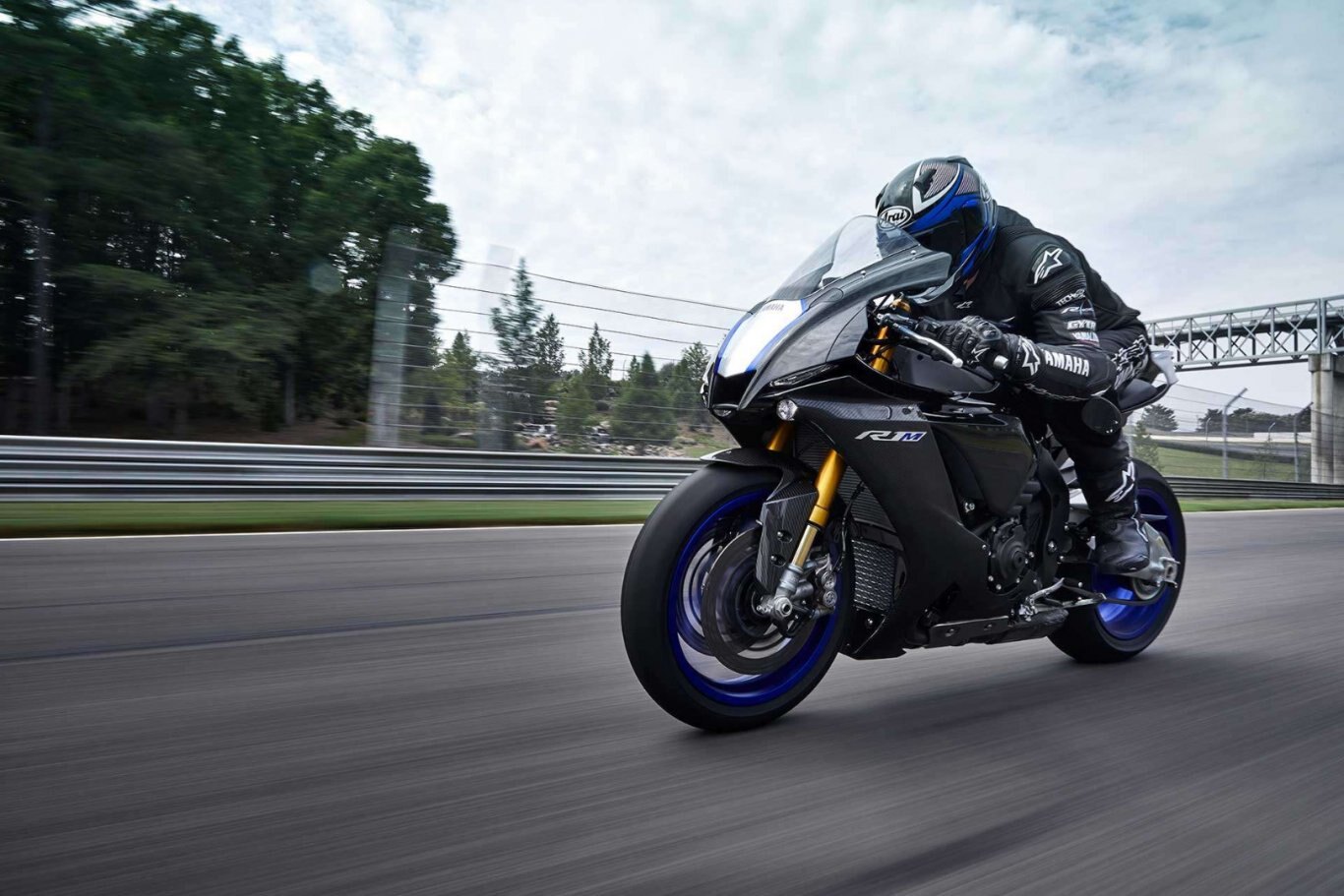
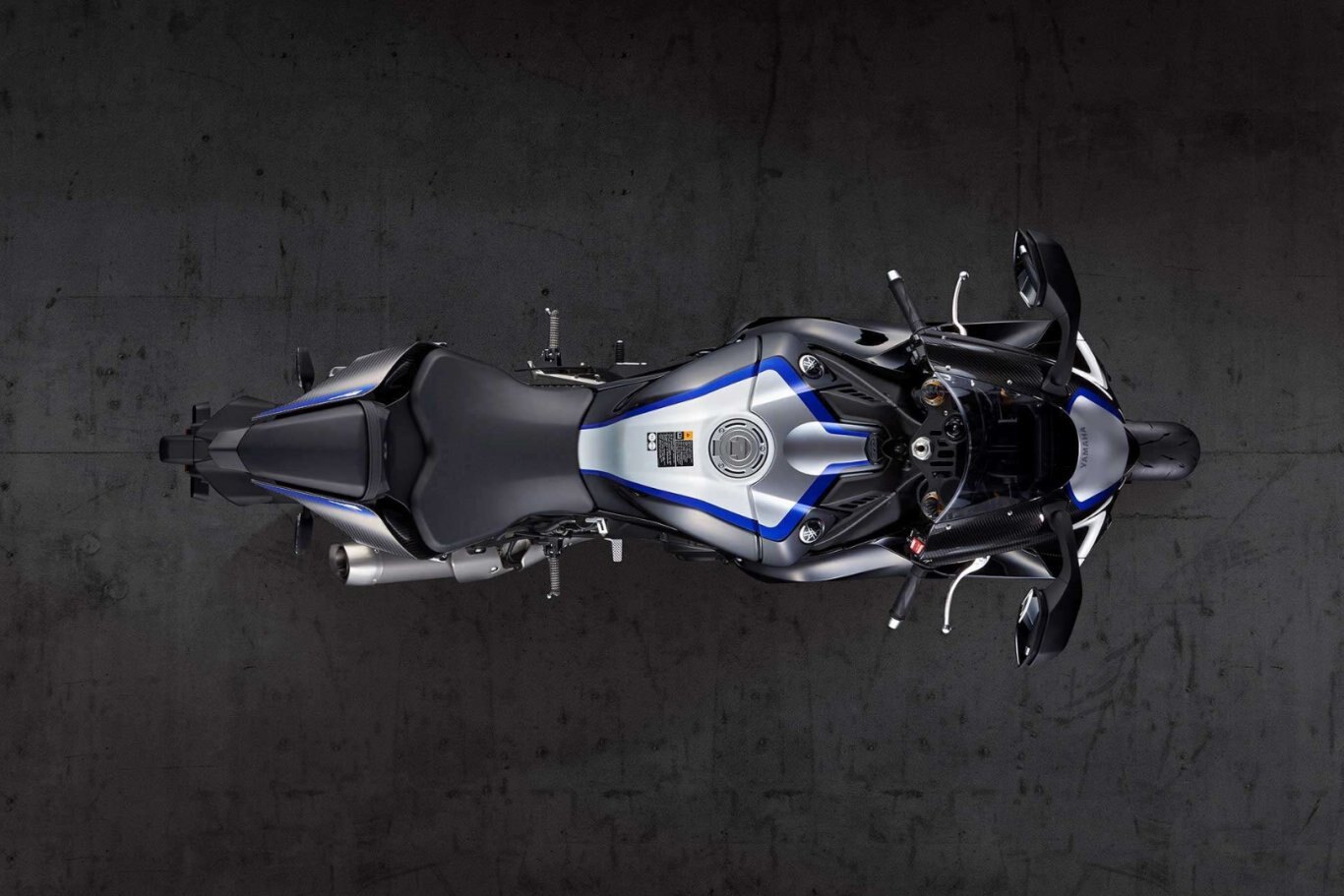
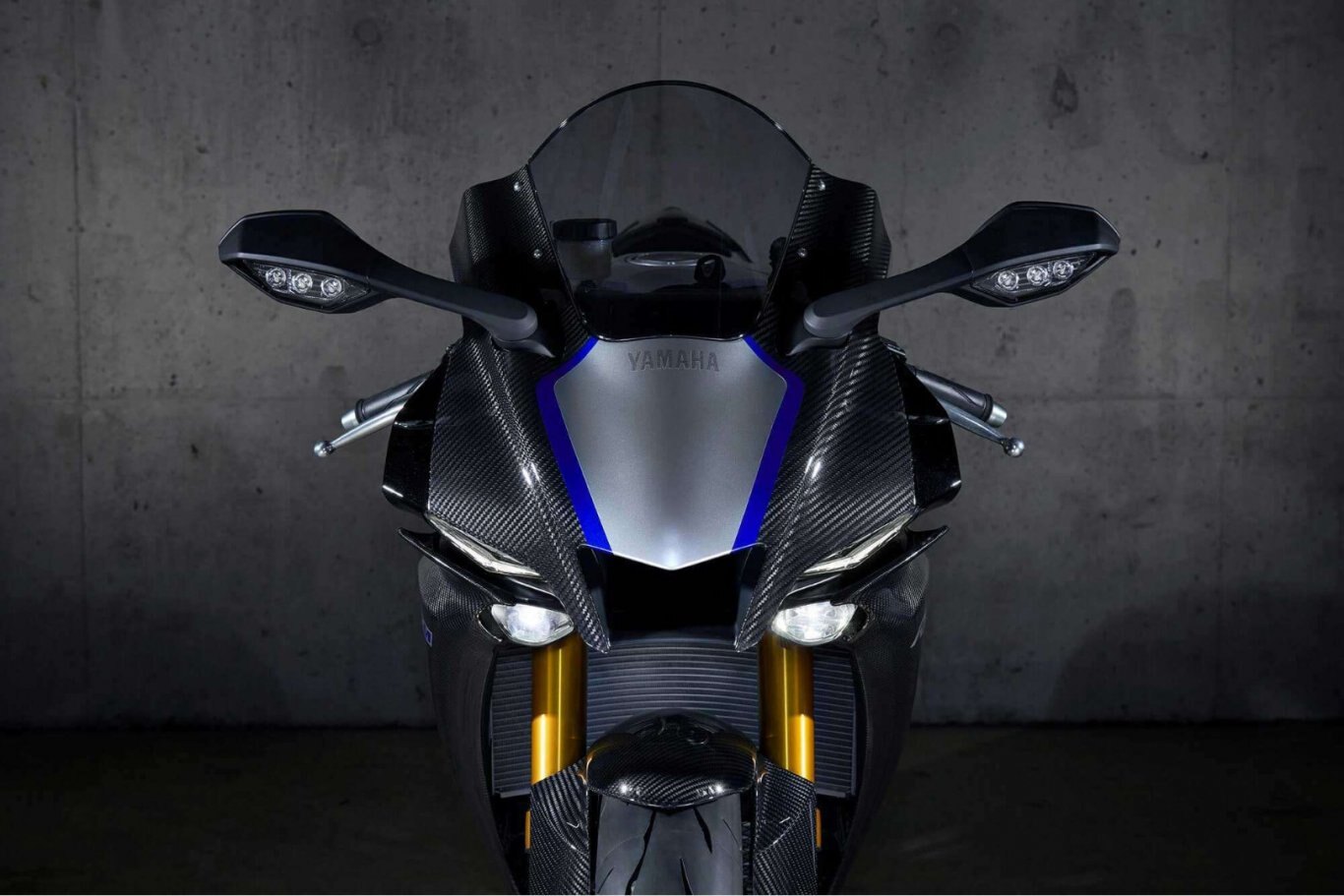
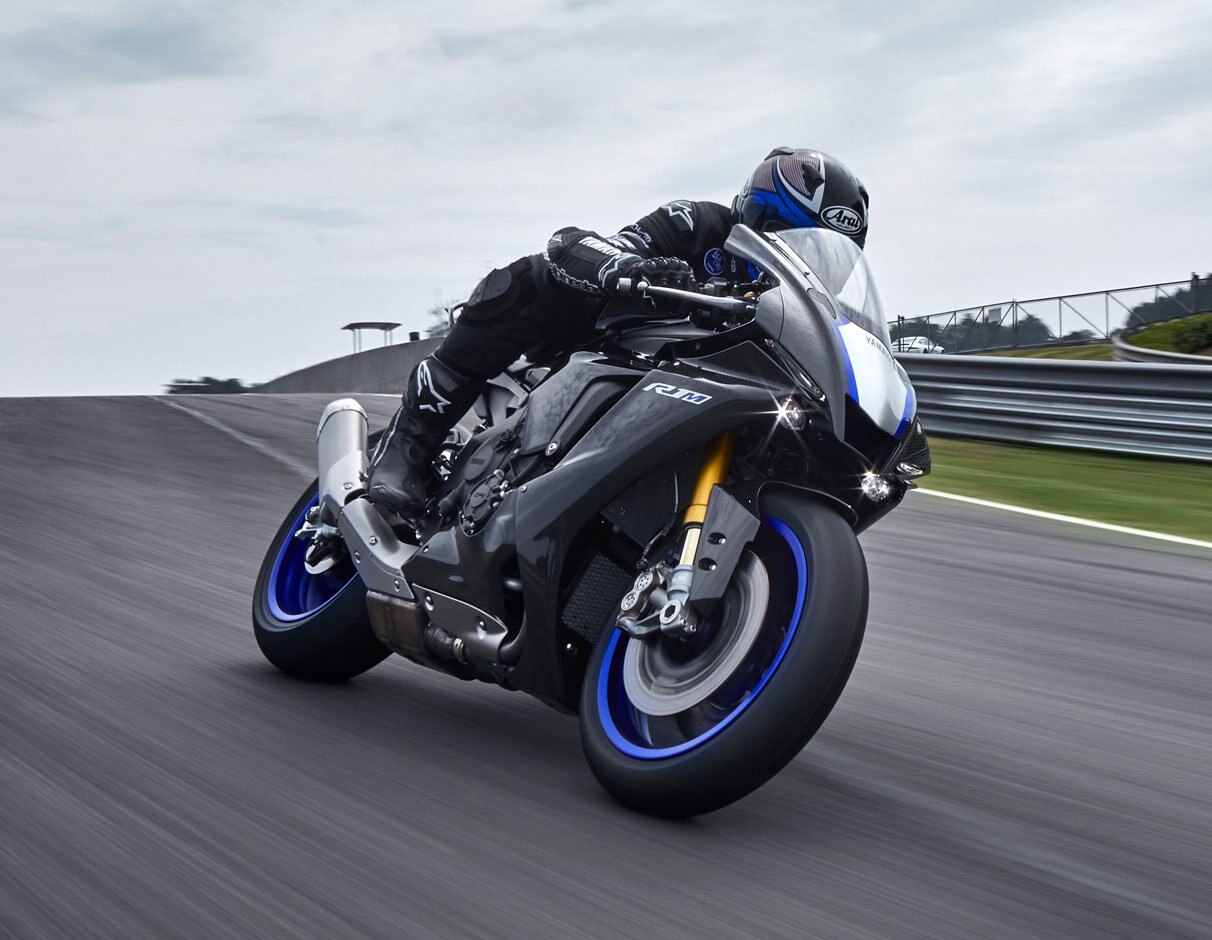
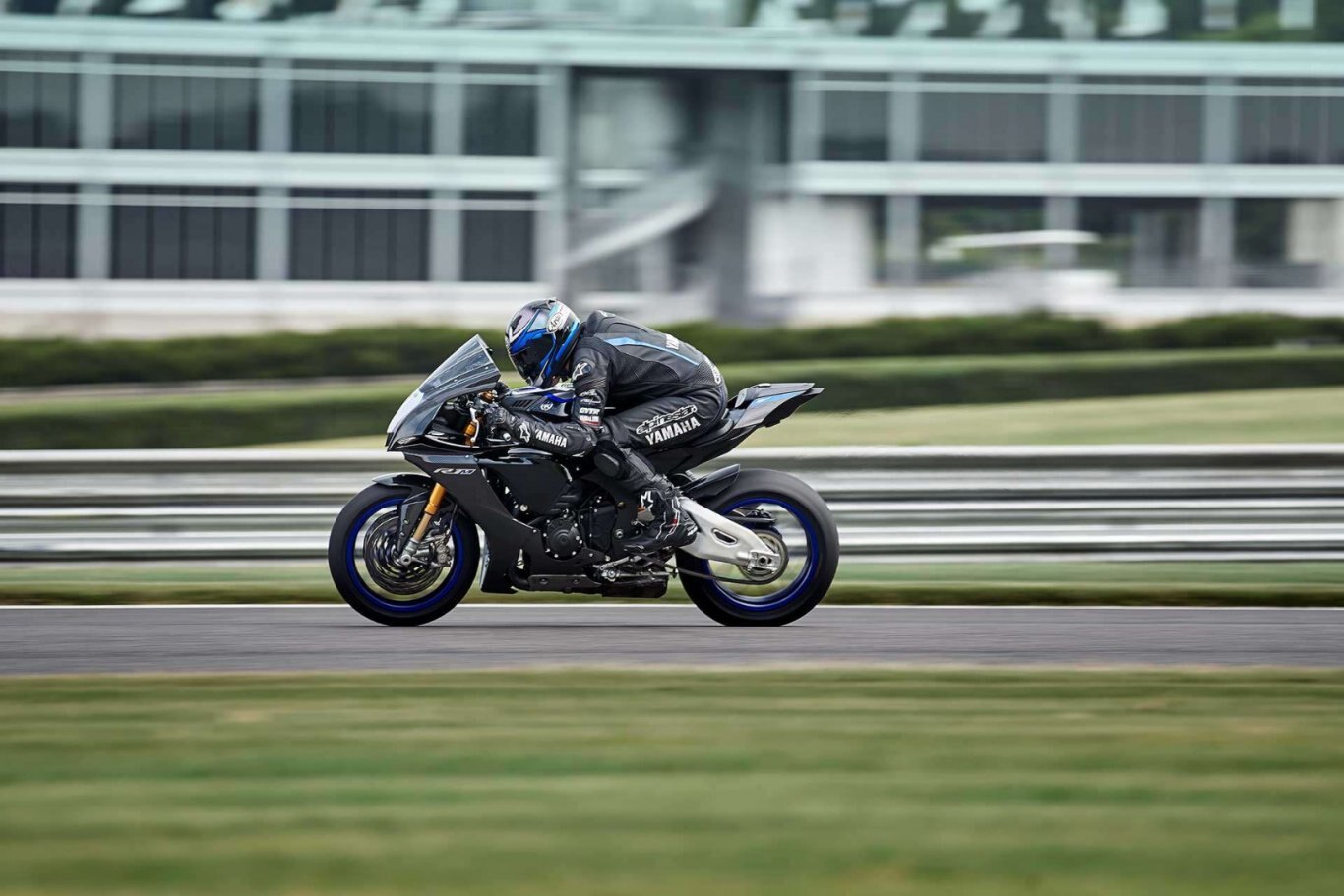


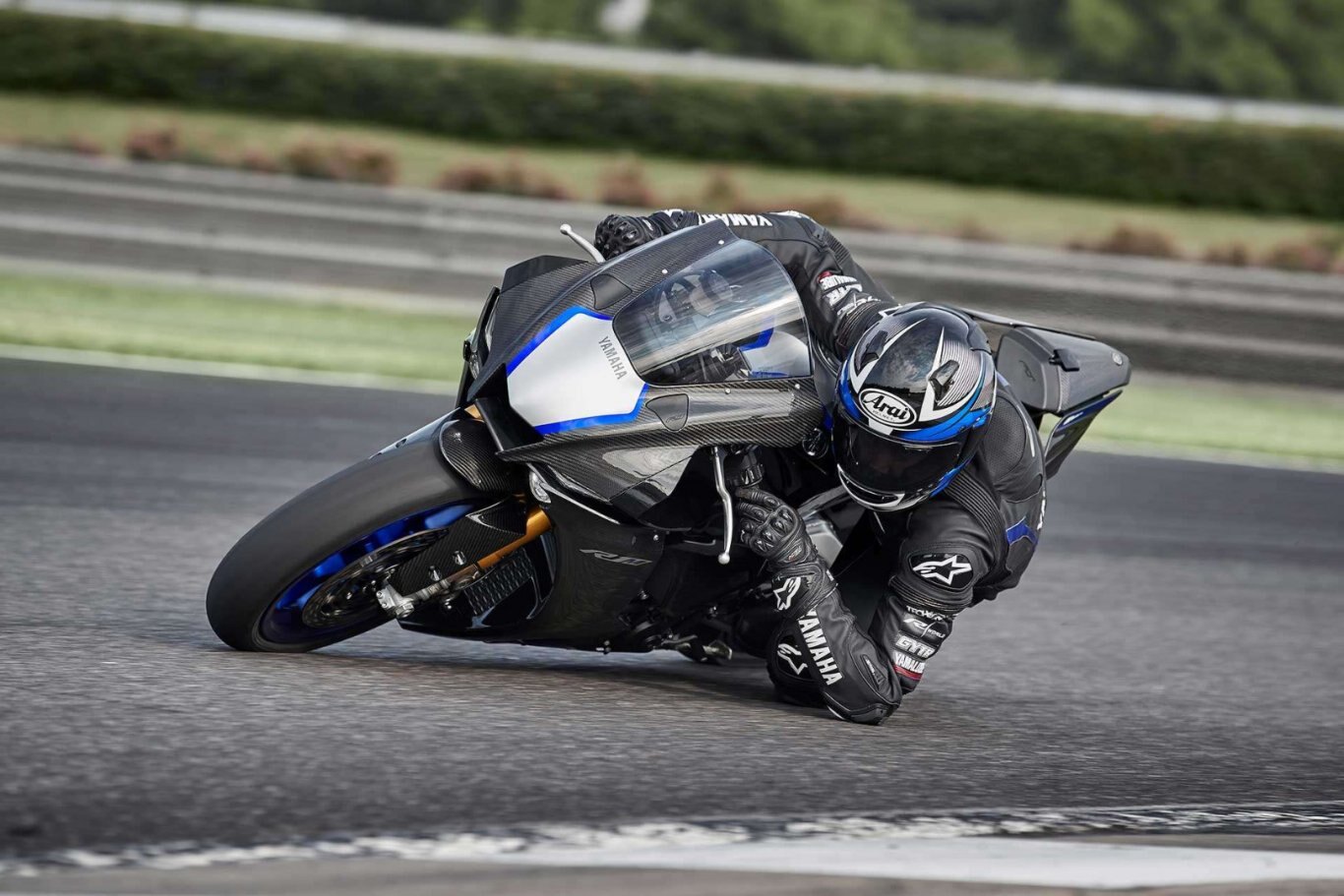
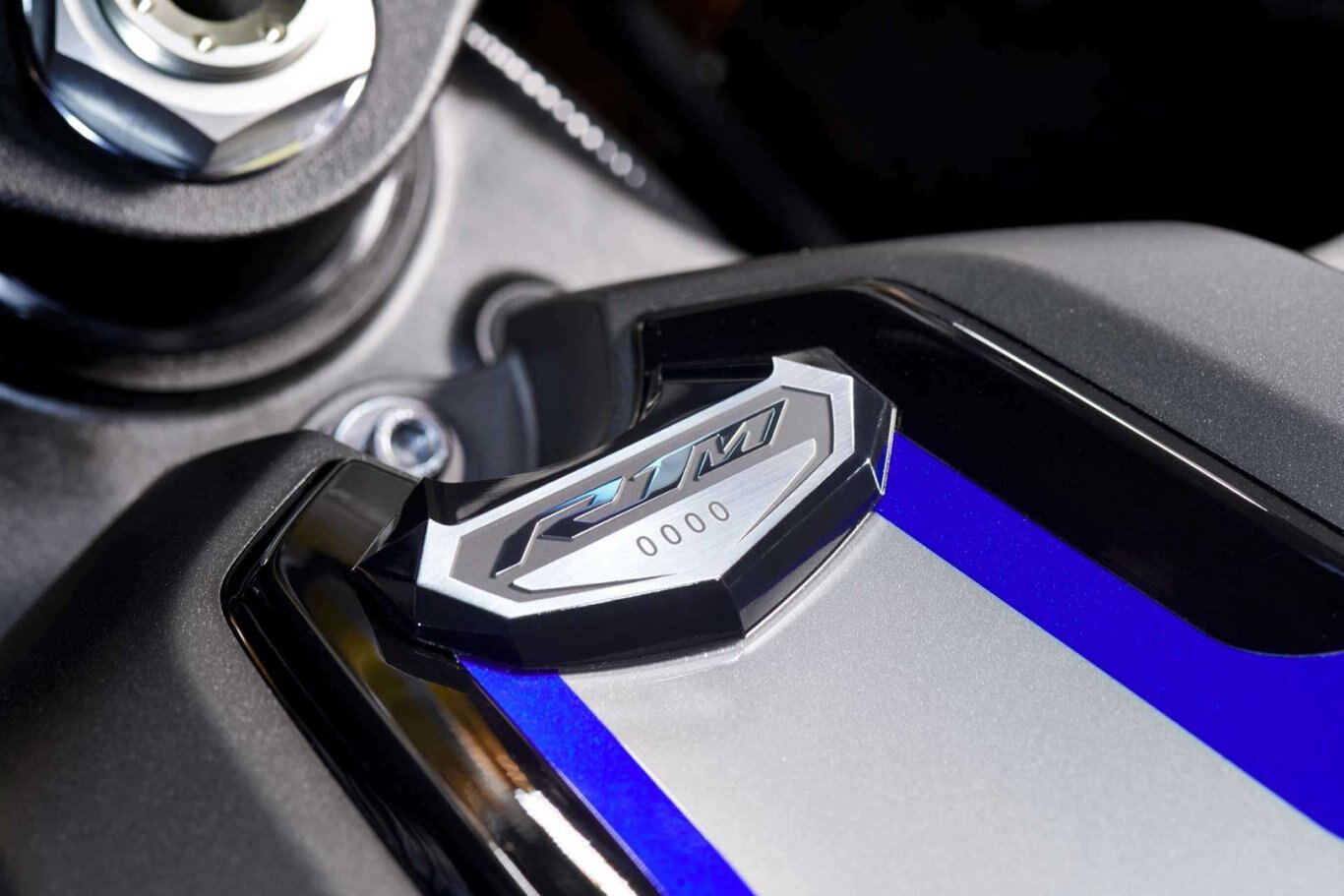
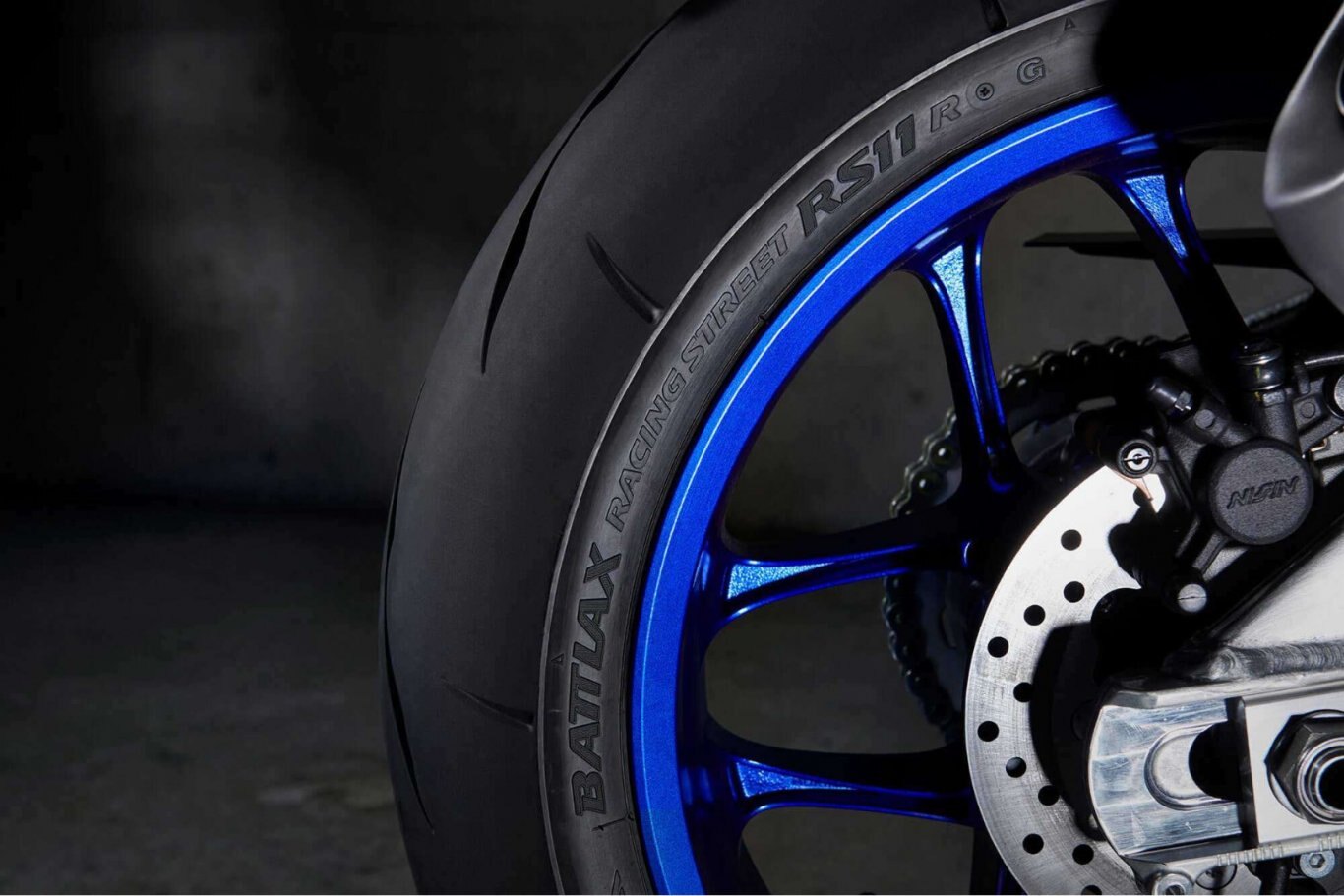
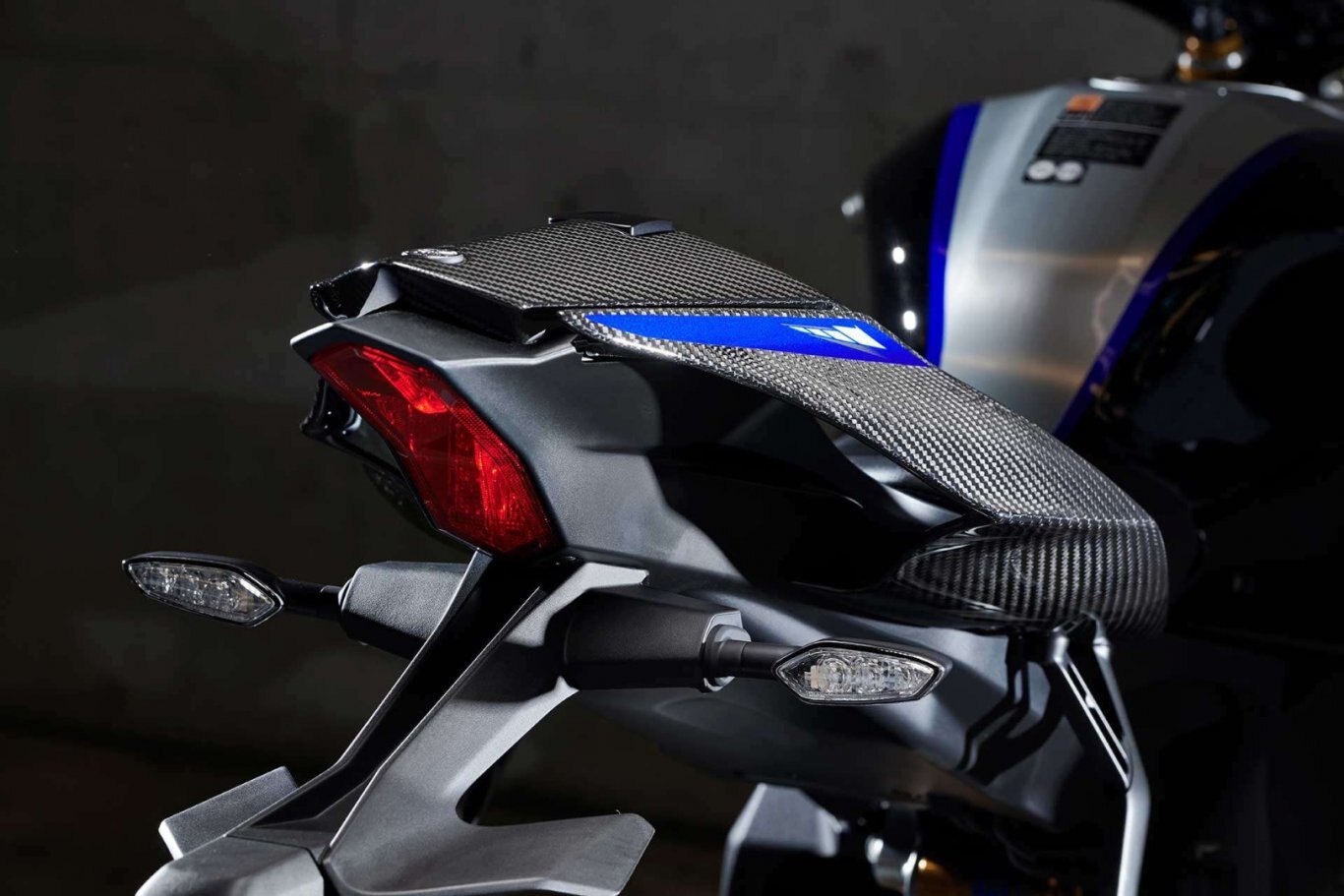
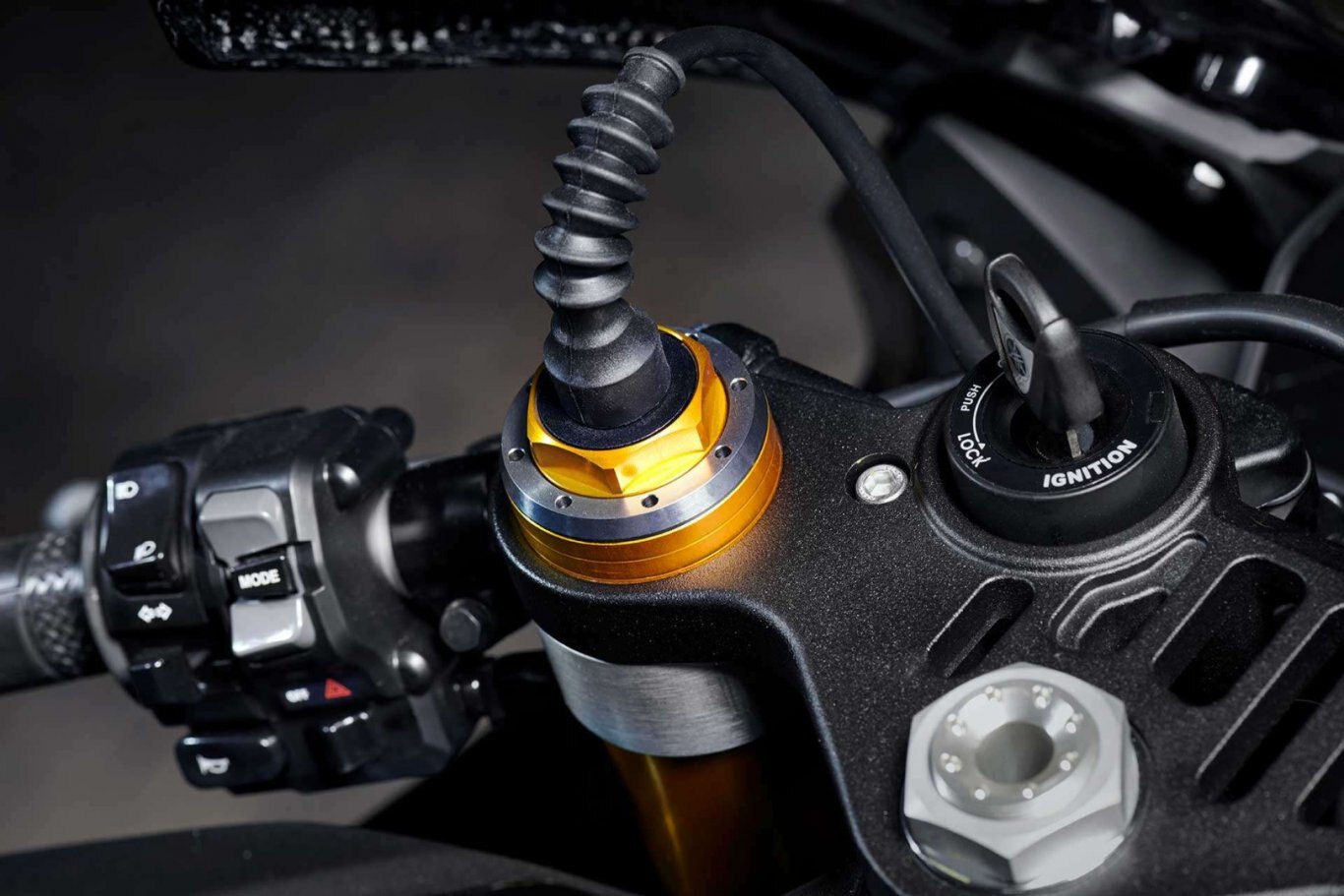













 SUSPENSION
SUSPENSION THE FINEST MATERIALS
THE FINEST MATERIALS ELECTRONIC RIDER CONTROLS
ELECTRONIC RIDER CONTROLS